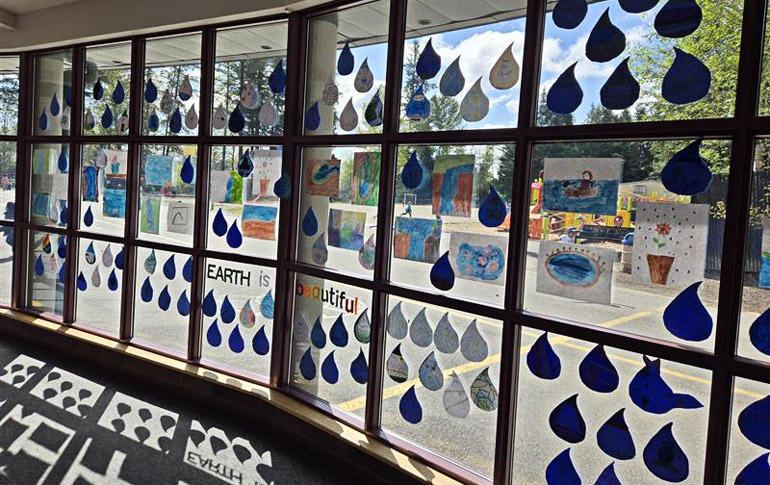Water conservation
This benchmark covers water conservation and the protection of local watersheds. Schools use water for various purposes such as drinking, cooking, cleaning, classroom instruction (such as in science labs), and irrigating school grounds. Through proactive measures, schools can reduce water usage and protect resources.
Criteria for recognition
Schools
Complete at least 1 water conservation activity or student project with an adult advisor. Contact your program representative for project ideas.
- Conduct a baseline Waste Walk Through (WWT) at least every 2 years. Use the information to set goals
- Share your water conservation goals with the rest of the school. Examples could include assemblies, newsletters, announcements, or social media posts.
- Share your water conservation efforts and progress with your program representative.
Districts
Districts can find recognition criteria for the Water Conservation Benchmark in the District Benchmark Guide.
Recognition form
Schools
Fill out the School Water Conservation recognition form. You may fill out the form to receive your benchmark badge at any time of year. Contact your program representative if you need assistance filling out the form.
You can complete the recognition form over multiple sessions using the "Save" button. You will be emailed a link that allows you to continue filling out the form. Once the form is complete, select the "Submit" button.
Check out all the schools that were recognized for Water Conservation in 2024-25.
Districts
Fill out the District Water Conservation recognition form. Districts may fill out the recognition form to receive the benchmark badge in the spring of each school year.
Water Conservation resources and activities
- Printable “Turn off the faucet” cards
- Water conservation announcements
- Water conservation facts
- Pledge to conserve water and reduce water pollution
- Fact vs. Fiction: Water conservation and prevention slideshow
- Creating a school yard habitat
- Water footprint calculator
- Request water flow bags from your Green Schools Representative
Interested in learning more? Check out our resource list for more detailed information on this benchmark topic.
Success stories
Fourth and fifth grade students at Benjamin Rush Elementary School in Lake Washington School District made slide presentations to share about water conservation with the rest of the school. They also posted signs by all the sinks to remind people to turn off the faucet. Finally, students wrote persuasive letters to the school district to get water bottle refill stations in the school, and the district approved two stations!
Students at Albert Einstein Elementary School in Lake Washington School District made announcements throughout the school year about how to save water at school and at home. They measured how much water came out of the faucets in the sinks throughout their school and noticed that they were all set to low-flow amounts. They hung signs near all the sinks reminding students to turn off the faucet when they were not being used. Students also made raindrops filled out with why it is important to conserve water and hung them up on the windows in the common area at their school.


 Translate
Translate